CLaCS
Cryo-Laser & Cryo-Sclerotherapy – Cosmetic Treatment for Spider Veins and Varicose Veins

PE Vein is the first to offer CLaCS cosmetic treatment for spider veins and varicose veins in Africa. We received training directly from Professor Kasuo Miyake, the creator of the CLaCS treatment, and brought the treatment to South Africa – South Africa is one of 10 countries in the world to offer the treatment.
How Does It Work?
vCryo-Laser and Cryo-Sclerotherapy (CLaCS) treats spider veins and varicose veins by combining a transdermal laser effect, injection sclerotherapy and skin cooling.
Skin cooling takes place throughout the procedure. The ‘cryo’ in CLaCS describes the part of the procedure wherein cold air (-20°C) is blown onto the skin. Cooling the skin helps to protect the skin and also reduces pain during laser and injection sclerotherapy.
The first part of the procedure involves an ultrasound evaluation – this is performed on all patients to map the varicose veins and spider veins to identify their connection with the perforator, saphenous and feeder veins in order direct the CLaCS treatment. Veins measuring 1.5mm in internal diameter and smaller can be treated using the CLaCS treatment. Larger veins, however, will require standard surgical phlebectomy.
In the second part of the treatment, augmented reality comes into play. An augmented reality device is used to brighten the skin with infrared light. The device then films what it sees with an infrared camera, processes the data and projects the image onto the skin. This allows for the mapping of the varicose veins that are too shallow to detect via ultrasound. It also serves as a good test to see if the transdermal laser will reach the targeted varicose veins. The use of augmented reality greatly improves the accuracy of laser and sclerotherapy and, thus, the success of the vein treatment.
During the third part of the treatment, the transdermal laser is now directed at the targeted varicose veins or spider veins that have been identified in the ultrasound and augmented reality phases. The laser uses pulses of light and heat to damage the inner vein wall. If the vein does not collapse or shrink, a second shot with the laser will be required.
During the final phase of the CLaCS procedure, the injection sclerotherapy takes place. Sclerotherapy is the treatment of blood vessels and blood vessel malformations such as spider veins and varicose veins. A chemical is injected into the veins allowing them to shrink in size.
Recovery
- There are no restrictions after undergoing the CLaCS procedure – it is a simple walk-in, walk-out procedure. However, you should avoid using any type of skin tanning agents for at least two weeks prior to the CLaCS treatment.
- Compression stockings need to be work for one month after the vein treatment. For the first week of recovery, the compression stocking should be worn during the day and night. For the remaining three weeks thereafter, the compression stocking only needs to be worn during the day.
- Patients will be able to return to their normal lifestyle after the treatment has been completed and are encouraged to be as active as possible.
Benefits Of The Procedure
- The CLaCS procedure is a simple in-out procedure and will not take long to administer.
- There is little to no recovery period after the procedure.
- CLaCS is a non-invasive procedure.
- Patients will experience relief from the symptoms of varicose veins as well as cosmetic reprieve.
